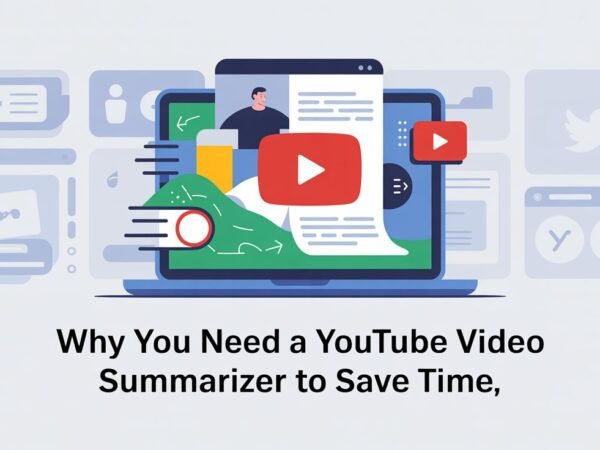Table of Contents
ToggleWeb Application Development Cost Breakdown in 2025
Having a web app can be a huge boost for businesses looking to grow their online presence or streamline how they deliver their services—especially in today’s digital world. Whether you are thinking about building a customer portal, an e-commerce site, or even just an internal tool, there is probably one big question on your mind: “How much does it cost to build a web app?”
Honestly, estimating the web app development cost can be a bit overwhelming. It’s not as simple as just hiring developers. There is so much more involved, like planning, design, technical features, compliance issues, and, let’s not forget, long-term maintenance. The good news is that by understanding the key factors that influence these costs, you can budget better and avoid those nasty surprises that might pop up down the road.
This guide will break down the cost of web application development for you. We will go over everything from small, basic apps to more complex, enterprise-level solutions. Plus, we’ll talk about how different features affect costs and how progressive web app development costs compared to traditional apps.
Why Is Web Application Development Cost Estimation So Complicated?
Building a web app isn’t like buying something off the shelf. Each project is unique, which is why web application development cost estimation can vary so much. It’s like asking, “How much does it cost to build a house?” Without knowing the size, materials, location, and design, any contractor is just guessing. The same goes for web apps—the cost to build a web application depends on things like the scope, design, complexity, and the development team’s experience.
Key Factors That Affect the Cost of Web Application Development
Let’s dive into the main elements that’ll affect your custom web application development cost:
1. Scope of Work
The more features and functionalities you want, the more time and resources it’ll take to build, which naturally increases the web app development cost.
- Small Apps: Simple apps, like promotional websites or internal tools, usually don’t cost too much.
- Complex Apps: If you need advanced stuff like real-time data processing, payment gateways, or third-party integrations, the price will go up.
2. UI/UX Design
The design of your app matters, and it’s not just about looking good. It’s about providing a good user experience. A custom UI/UX designed just for your brand is going to cost more than using a pre-built template. But in the long run, a custom design can make your app stand out—and that could be worth the extra cost of web app development.
3. Technical Complexity
The more complex your app, the more expensive it’ll be. Here are a few examples:
- API Integrations: Want to connect to third-party services like payment systems or social media? That adds complexity, and yep, more cost.
- Data Analytics: If you need to process or analyze tons of data, you’re going to need a more sophisticated back-end system, which means higher costs.
- Security Features: Do you need to comply with GDPR, HIPAA, or other regulations? That’ll bump up your web application development cost too.
4. Deadlines
If you’re in a rush and need your app developed super fast, expect to pay more. Tight deadlines can increase the cost of web app development because more developers might need to work on it at the same time, or they may need to work overtime to meet the deadline.
5. Business Niche
Certain industries—like healthcare or finance—come with specific requirements and strict regulations. If your app needs to follow these, you’ll probably see a jump in your web application development cost.
6. Development Team Location and Expertise
The location of your development team plays a big role in determining the cost of building a web application. Developers in the U.S. or Western Europe tend to charge more, while those in Eastern Europe or South Asia are usually less expensive. However, more experienced developers, even if they’re pricier, might save you money in the long run because they can get the job done faster and with fewer mistakes.
Here’s a quick look at average developer salaries across different countries:
| Country | Average Web Developer Annual Salary (USD) |
|---|---|
| United States | $177,250 |
| United Kingdom | $107,081 |
| Germany | $87,000 |
| India | $30,283 |
| Ukraine | $55,000 |
Clearly, where you hire your team will have a big impact on your web app development cost.
Average Cost of Web Application Development
Now, let’s look at some rough estimates based on the complexity of the app:
1. Basic Web Apps
- Cost: $20,000 – $50,000
- What’s Included: Simple functionality, basic design, limited interactivity.
- Examples: Small business websites or basic content management systems.
2. Mid-Complexity Web Apps
- Cost: $50,000 – $100,000
- What’s Included: More interactive elements, custom designs, integration with third-party services.
- Examples: E-commerce websites or customer portals.
3. Complex and Enterprise Web Apps
- Cost: $100,000 – $300,000+
- What’s Included: Advanced features like real-time data processing, complex user roles, and integration with multiple systems.
- Examples: Enterprise-level SaaS platforms, ERP systems, or custom CRM solutions.
Progressive Web App Development Cost
If you’re considering a more budget-friendly option, Progressive Web Apps (PWAs) might be the way to go. These apps offer a web-based experience similar to native apps but without the high price tag. The progressive web app development cost usually falls between $50,000 and $150,000, depending on the features you need. They’re also faster to develop since they work across devices, which means you don’t have to build separate iOS and Android apps.
Hidden Costs of Web App Development
When estimating the cost of web application development, don’t forget about the long-term costs. These hidden expenses can add up over time and include:
- Maintenance and Support: Regular updates, bug fixes, and new features can add 10-25% of the total development cost each year.
- Hosting and Infrastructure: Depending on how big your app is, hosting costs could range from hundreds to thousands of dollars per month.
- Security: If your app handles sensitive data, you’ll need to invest in security updates to keep everything safe.
- Marketing: Even the best app won’t succeed without users. Post-launch marketing and user acquisition are crucial and will cost you.
Engagement Models and How They Affect Costs
How you work with your development team will also impact the web application development cost. Here are three common models:
1. Fixed-Price Contracts
- Best For: Small, well-defined projects.
- Cost Impact: These are often more expensive because developers include a buffer for risk. But they offer cost certainty, which can be comforting.
2. Time & Materials (T&M)
- Best For: Larger projects where the scope may evolve over time.
- Cost Impact: This model is flexible, but if the project scope grows, the cost will too.
3. Dedicated Development Teams
- Best For: Long-term projects with ongoing needs.
- Cost Impact: You pay for a team that’s dedicated to your project, giving you more control over costs.
How to Keep Web Application Development Costs in Check
Thankfully, there are ways to keep your web application development cost under control:
1. Start with an MVP
An MVP (Minimum Viable Product) lets you launch your app with only the core features. This helps you test the waters before spending more on advanced features.
2. Use Pre-Built Solutions
Instead of building everything from scratch, use pre-built frameworks and libraries. This can significantly reduce the average cost of web application development.
3. Focus on Core Features
By concentrating on the most important features, you can cut down on unnecessary development time and save money.
4. Use Cloud Services
Cloud-based services can help you scale resources as needed, which means you don’t have to invest a ton in infrastructure right off the bat.
Conclusion: What’s the Real Cost of Building a Web App?
Alright, so to wrap things up, estimating the cost of building a web app has a ton of moving parts. From the scope of your project, to how technically complex it is, to where your team is even located, the average cost for web app development can go anywhere from like $20,000 to $300,000 (or honestly, even more).
And don’t forget those long-term costs like maintenance, support, and scaling… they’ll creep up on you later for sure.
Honestly, the best way to get a real estimate for your web app cost is to work closely with a trusted development team. They’ll help you juggle your budget while still getting the features and performance you need to make your app a win right from the start.
Also read interesting articles at disboard.co.uk













